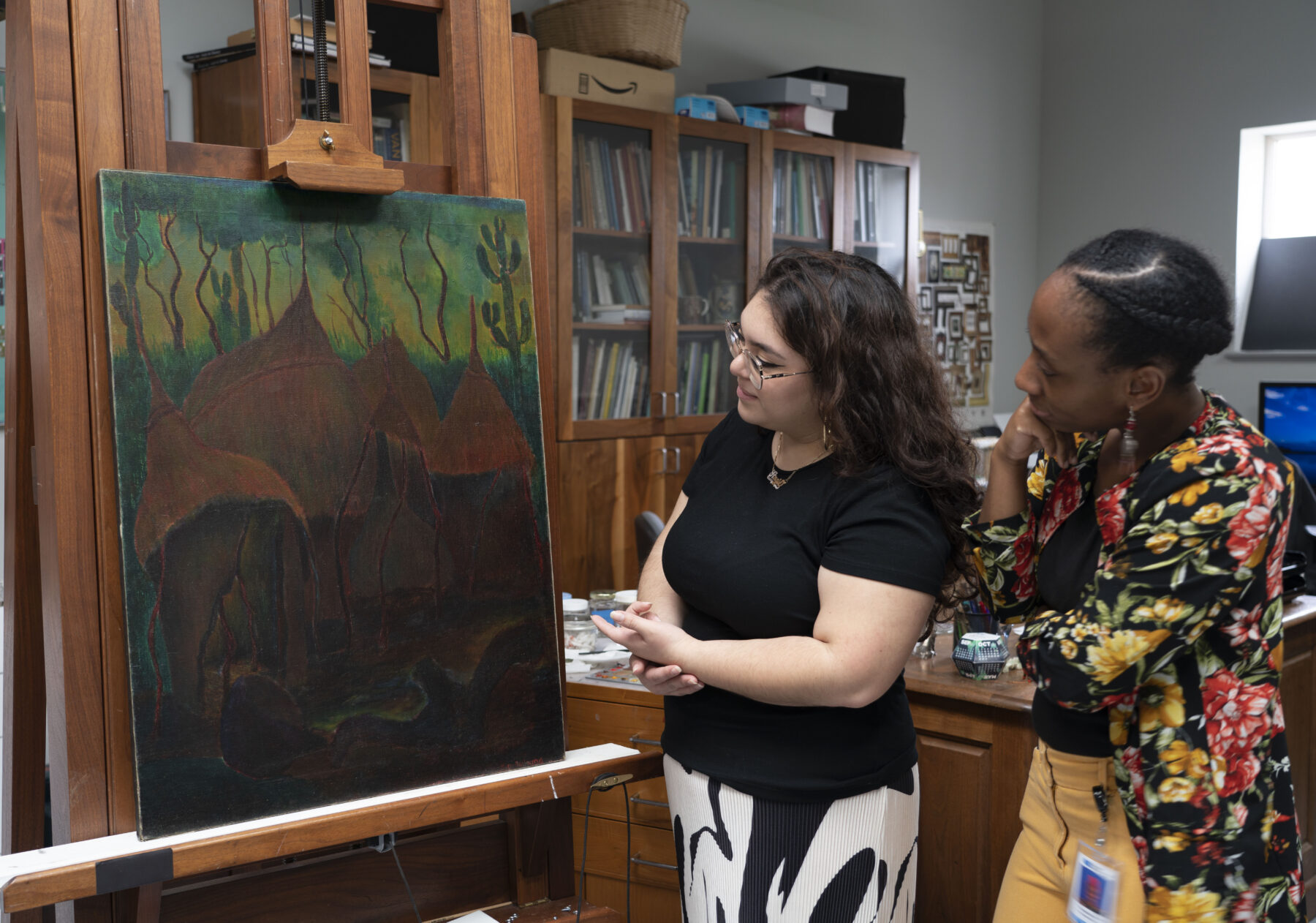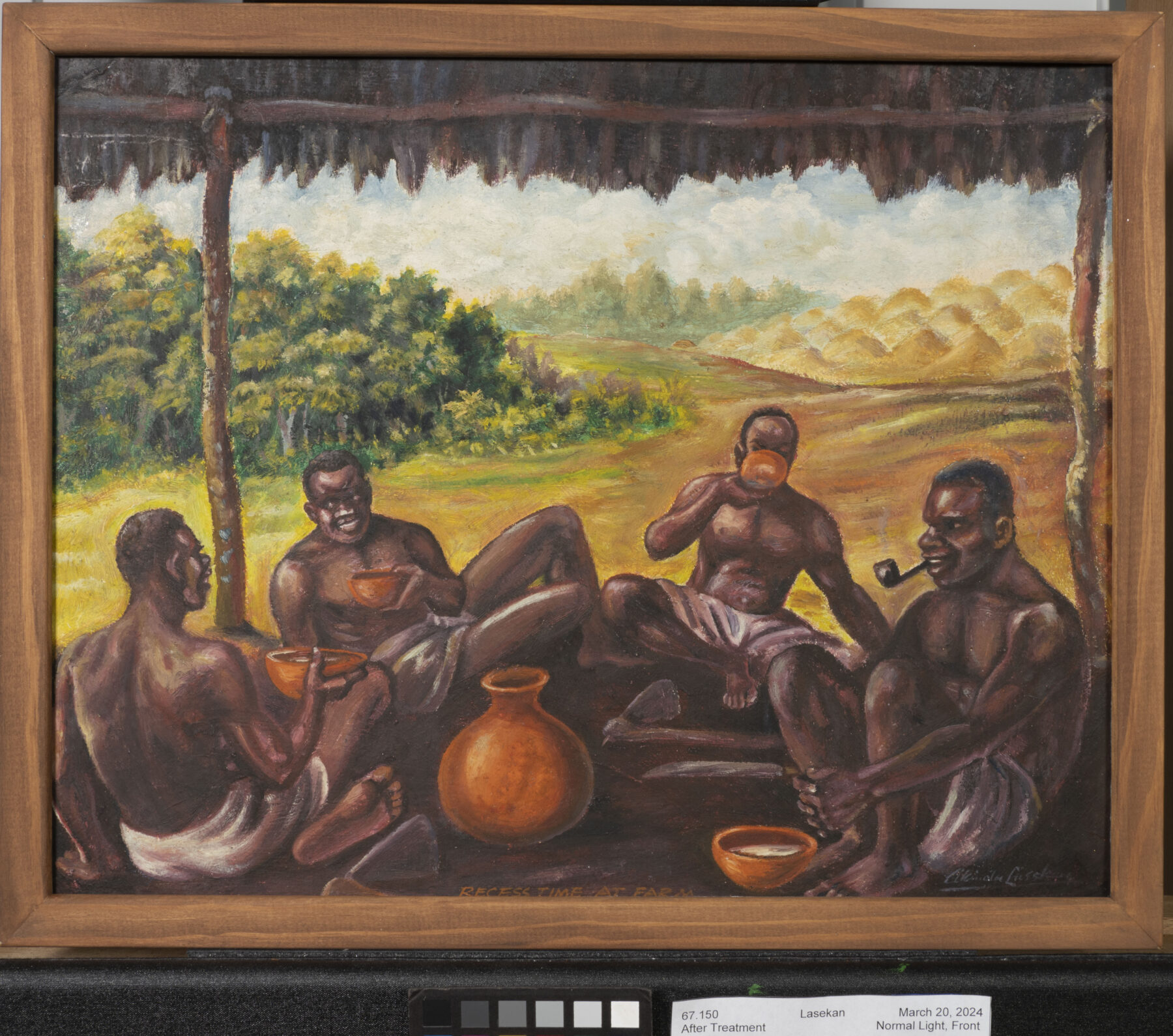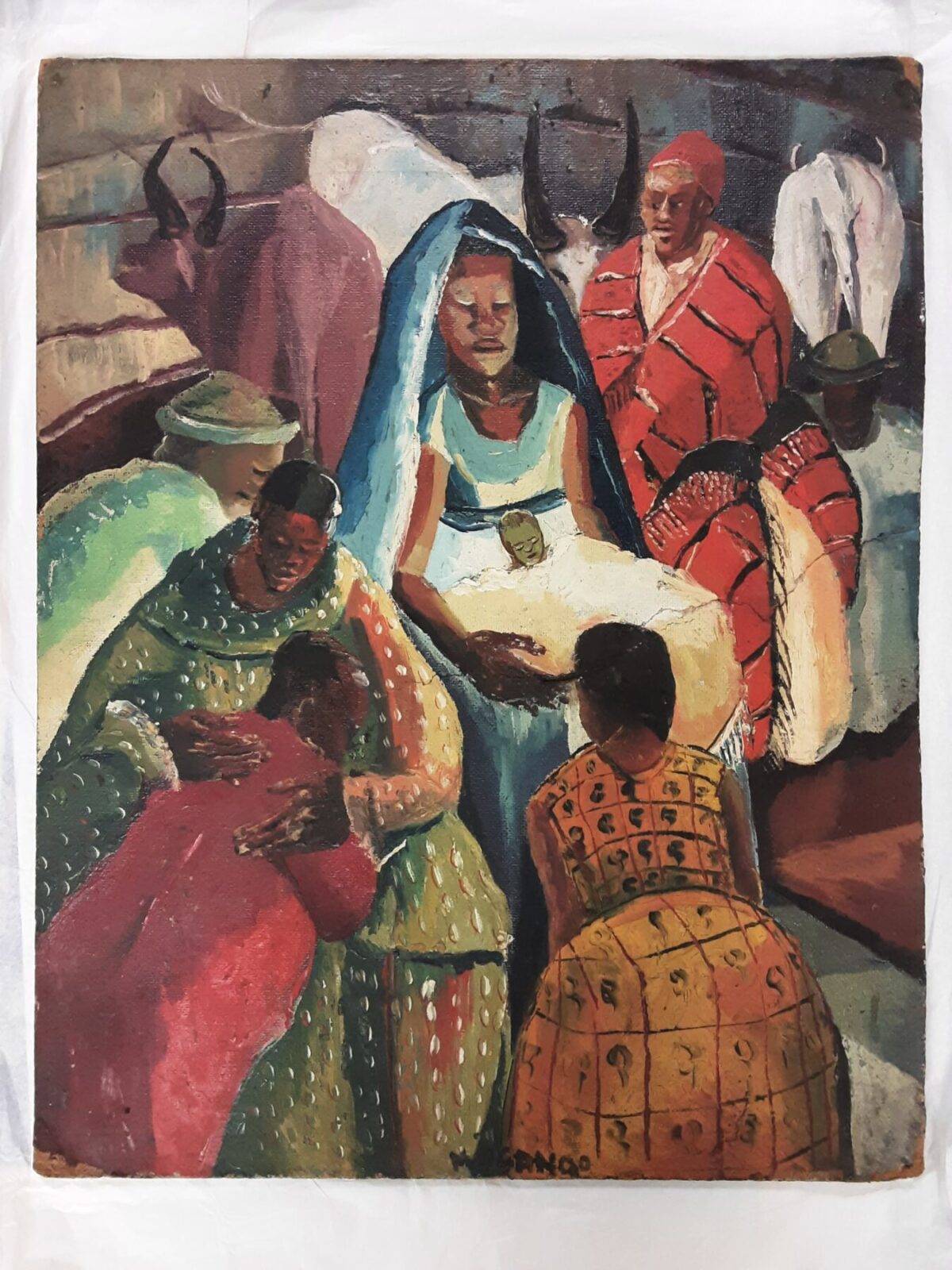A Conference in Detroit: MRCG Symposium 2022

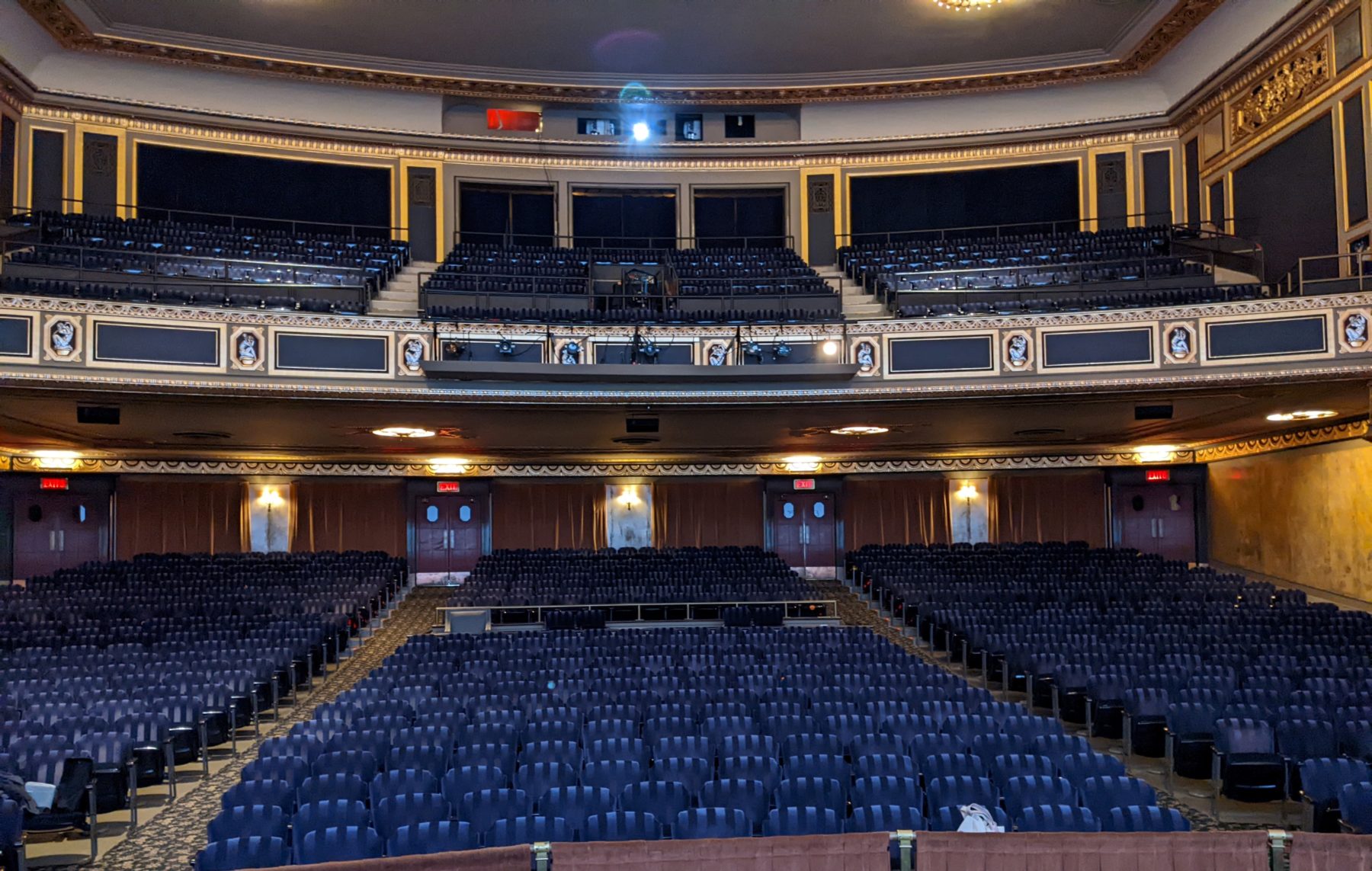
Interior of the Detroit Film Theatre at the Detroit Institute of Arts (DIA)
Background of the Conference Site
The 2022 Midwest Regional Conservation Guild (MRCG) Symposium was hosted at the Detroit Institute of Arts, which was founded in 1885 and moved to its current Beaux-Arts building in 1927. There are over 65,000 works in the collection and more than 100 separate galleries covering 658,000 square feet! Enormous! A dedicated conservation lab with five full-time staff members is central to the museum’s daily operations. The museum is known for the Detroit Industry fresco cycle (1932-33) by Diego Rivera (seen below) as well as important acquisitions of artworks by Vincent Van Gogh and Pieter Bruegel the Elder.
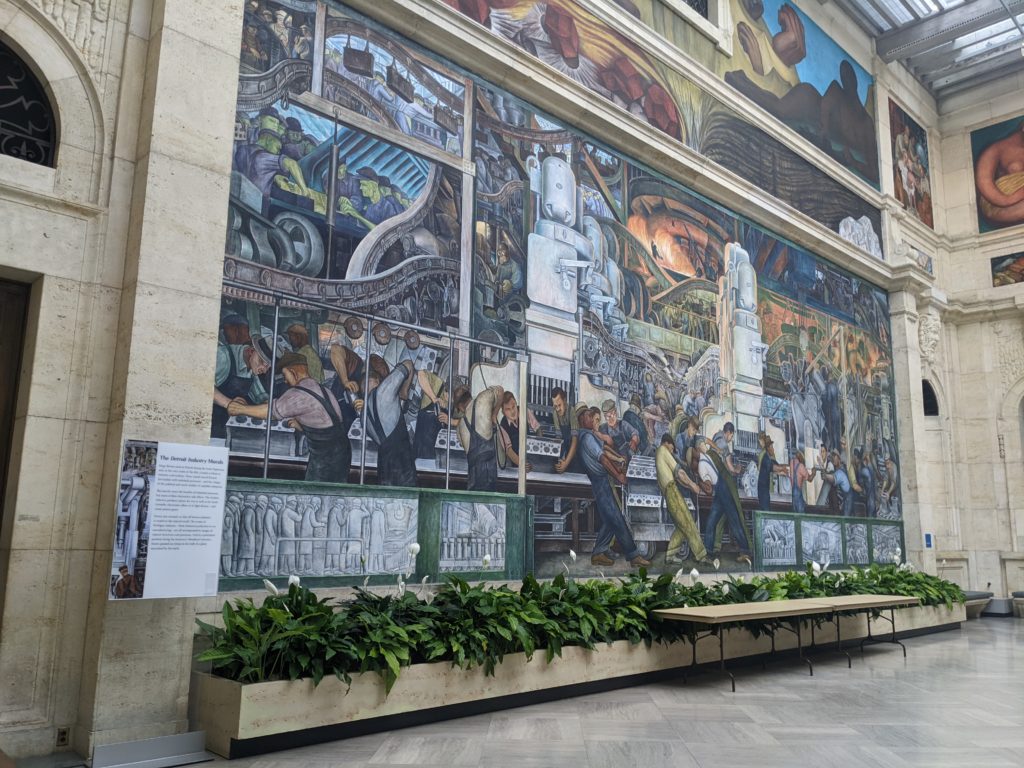
The conference was held in the 1927 Detroit Film Theatre (seen below), which is an ornate, vintage theater space with plush velvet seats, a balcony, and many gilded decorations. It was a bit intimidating to see the inside for the first time, but it was a very comfortable space for the talks to be presented. The sound and screen quality were good, and virtual attendees could listen in via Zoom. There were also snack breaks and a reception on Thursday afternoon in the beautiful Crystal Gallery on the second floor.
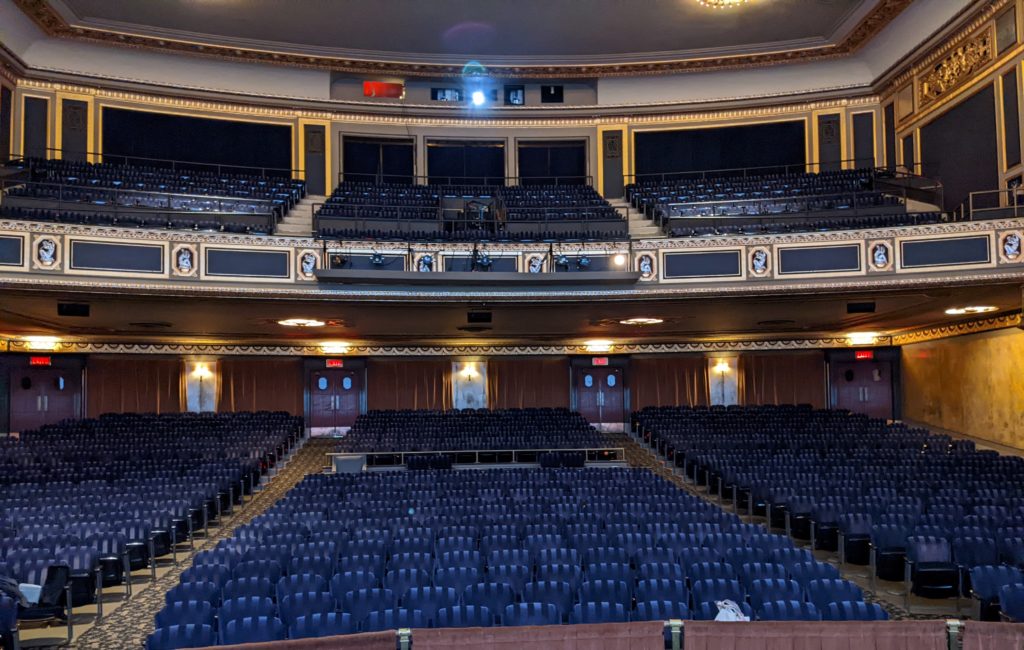
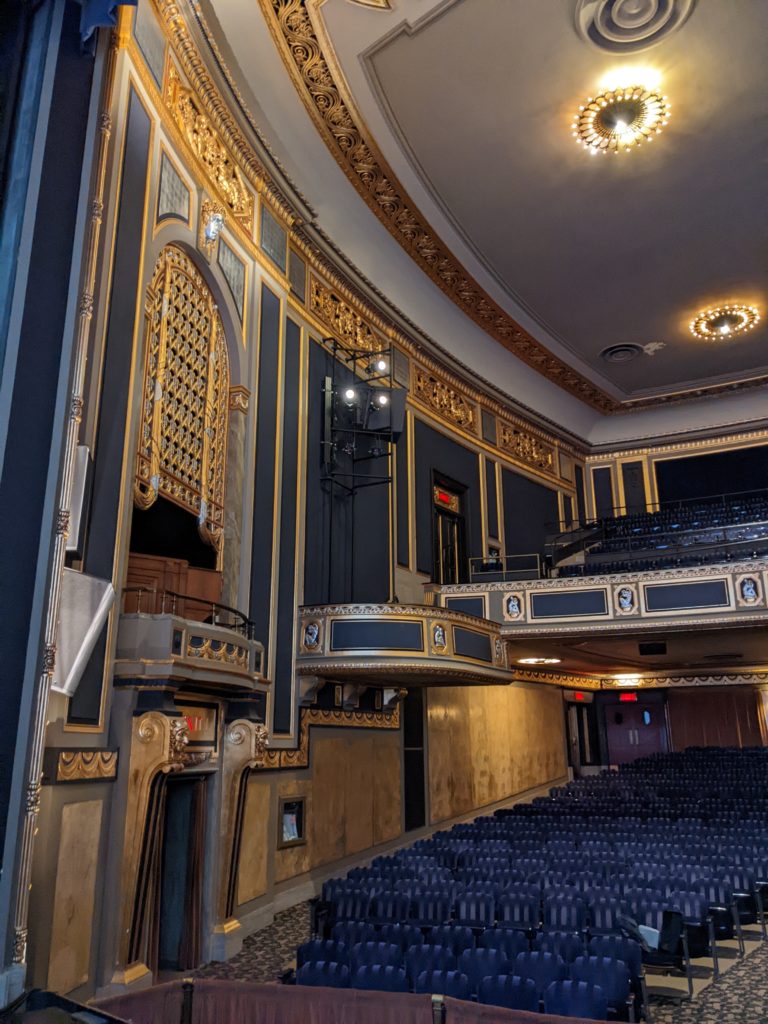
The Presentations
My presentation went very well and spurred lots of great conversations and feedback from other attendees. I had created the visual portion through the website Prezi, instead of the typical PowerPoint. I was nervous that it would not work and I couldn’t download a back-up version without a paid subscription. Mine was also the very first talk of the symposium, so I really wanted it to go smoothly! To prepare, I got to the theater quite early on Wednesday morning and was able to open and test the presentation in advance. It seemed to work well, and the connectivity stayed consistent. I met the other presenters of the morning, and we waited just off-stage while everyone got settled in the audience. The talk itself was a bit of a blur, but I stayed on time as I had practiced, and there were no technical glitches. The good thing about going first is that when I was finished, I could relax for the rest of the conference!
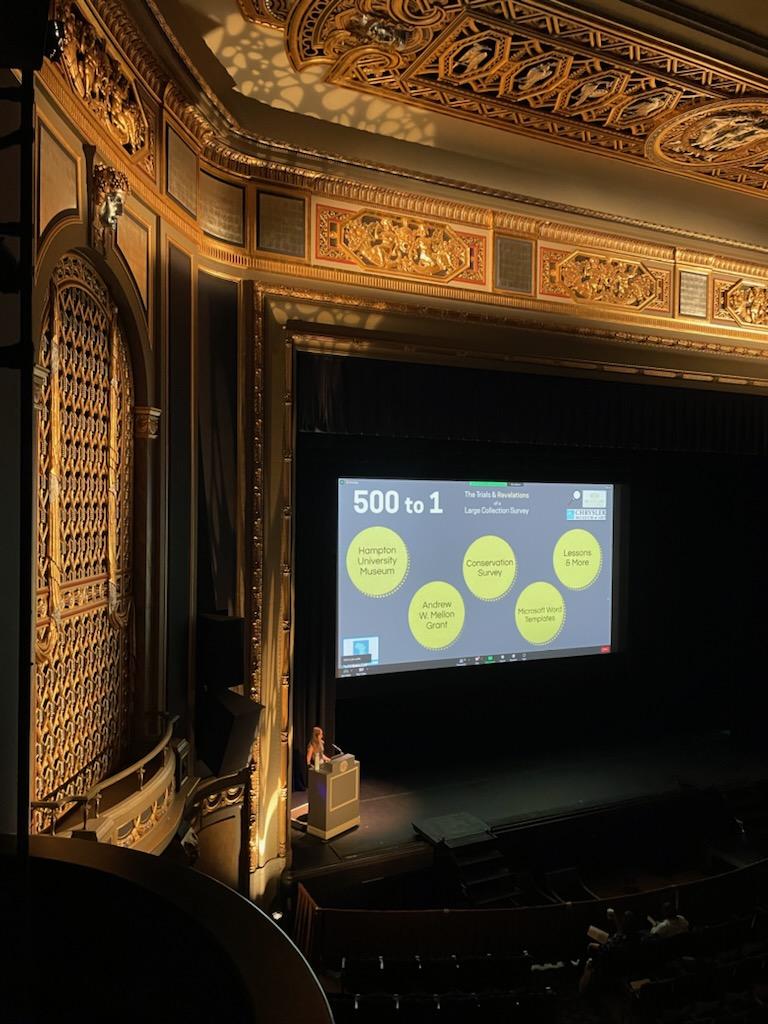
After speaking, I went into the audience to watch the other talks of the morning, including one about a mural by John T. Biggers, a well-known artist at Hampton University. There were many other interesting talks throughout the symposium which I enjoyed greatly. I learned more about mold remediation, 3D printing, and the activities of past restorers from the 20th century. During the breaks, I was able to talk to several other conservators who were dealing with survey projects, some much larger than my own. We compared notes and techniques on the most efficient way to gather and categorize data in a helpful way for the future.
Sightseeing in Detroit
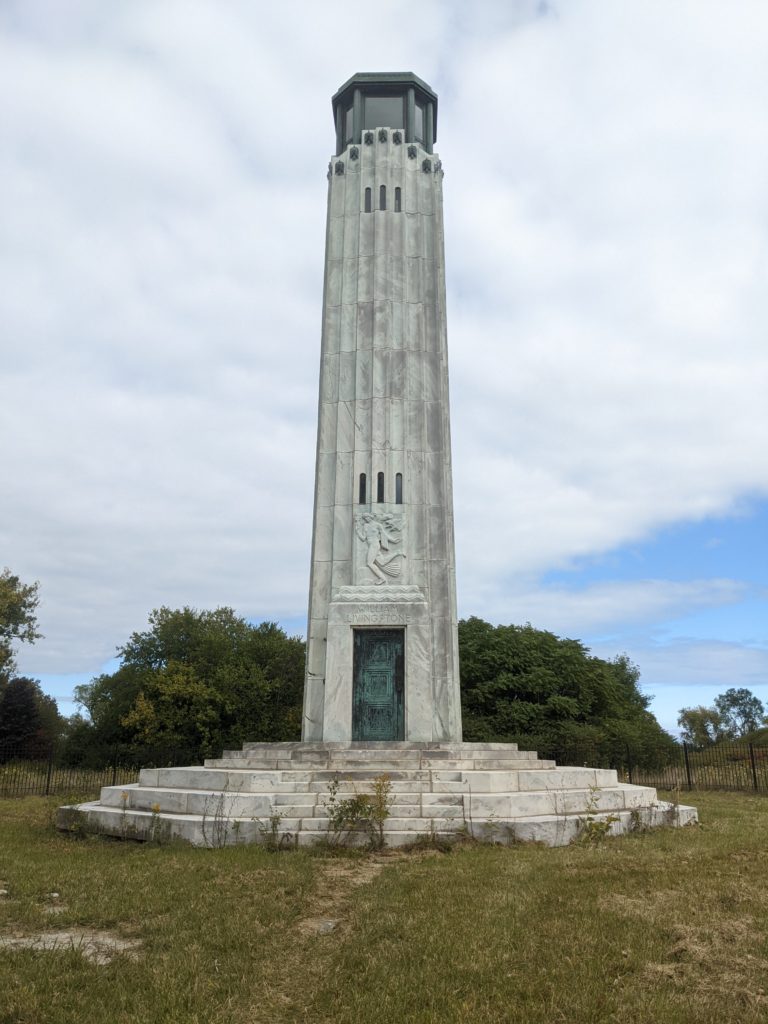
I did have some free time to see other parts of Detroit, partly because of a flight cancellation, but I made the best of it and got some more time to catch up with friends! On Thursday afternoon, the museum closed at 2 pm for a staff preview of the new Van Gogh exhibition, so the conference ended and I had lots of time to kill before dinner. I took advantage of the fact that another friend had driven up from Indianapolis in a minivan, and accompanied her and a coworker out to Belle Isle. We stopped at the Nature Center, and then took a nice 5-mile walk around the trails, to the William Livingstone Memorial Lighthouse (at left), and past the Coast Guard Station. From much of the island, you can see the Canadian city of Windsor to the south. It was a gorgeous day, with the sun peaking through clouds more and more, and nice views of the water all around. Eventually, we headed back to the city to grab drinks with some colleagues, one of which hadn’t been able to come to the conference. It was great to catch up with new and old friends and experience more of Detroit!
On Friday, I was supposed to fly home and land in Norfolk around 4 pm. Unfortunately, the remnants of Hurricane Ian were affecting the east coast, and the airline canceled my flight. The earliest I could get home was Saturday, so I made quick plans to stay another night in Detroit with a friend. Luckily, this gave me time to walk around the DIA more, which I had only seen briefly on Thursday as part of the conference tours. I was able to browse many of the galleries, but still did not have enough time to see everything as it is so large. I focused on the paintings and artists I was most interested in. The photos below show some of my favorite highlights:
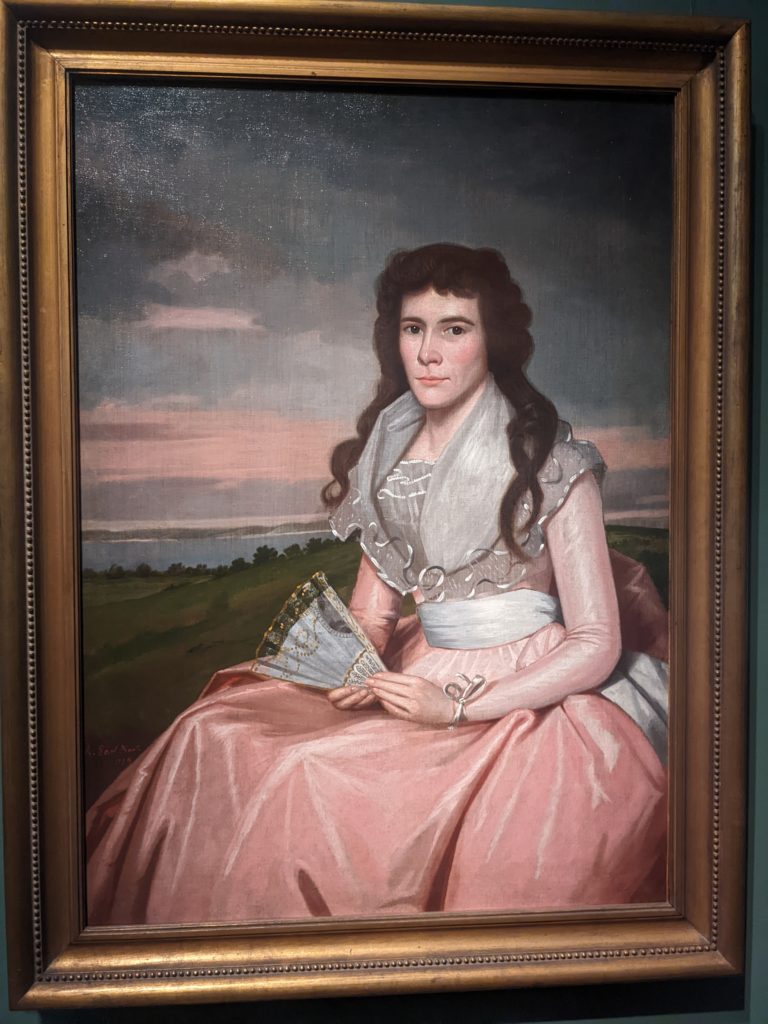
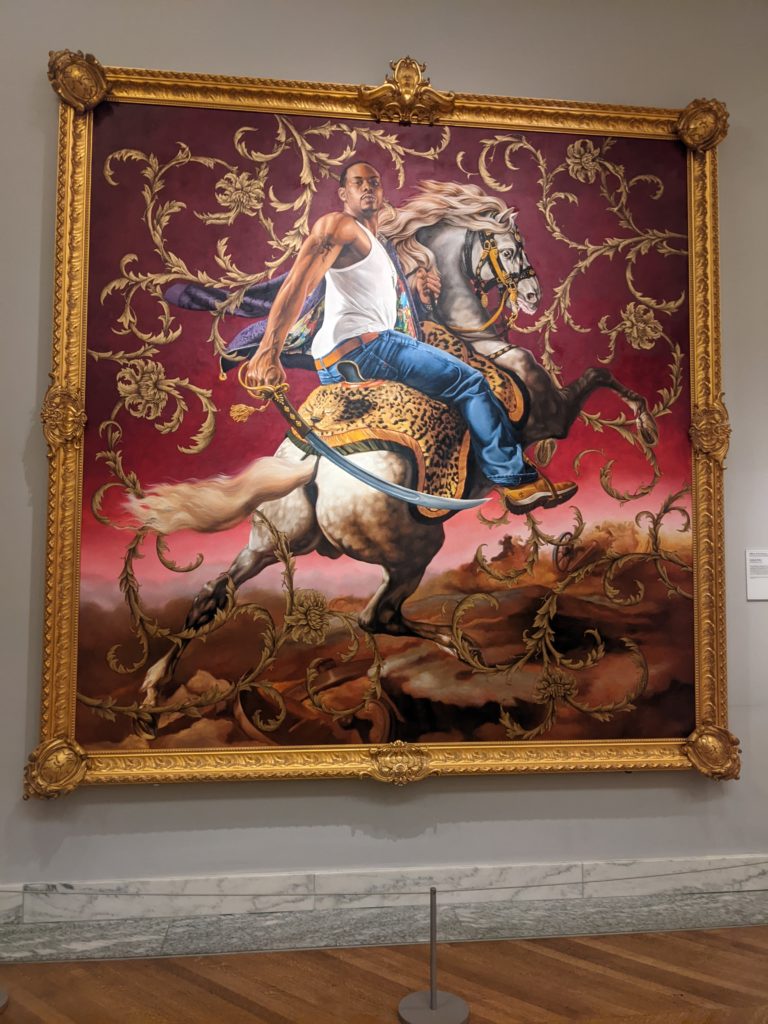
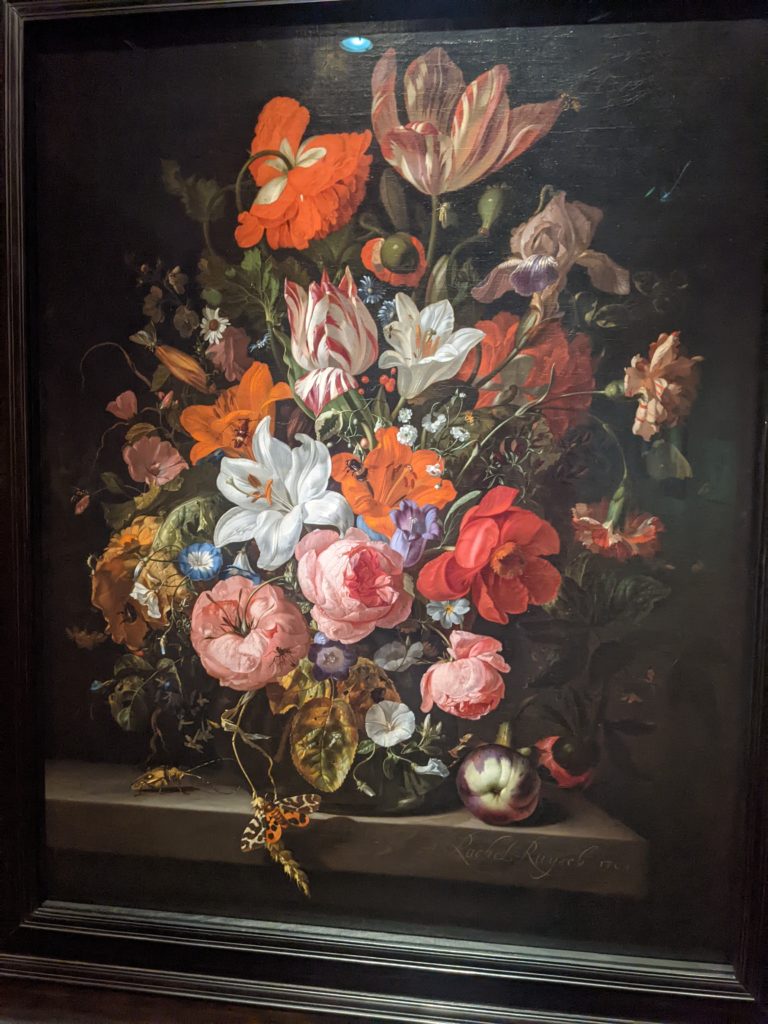
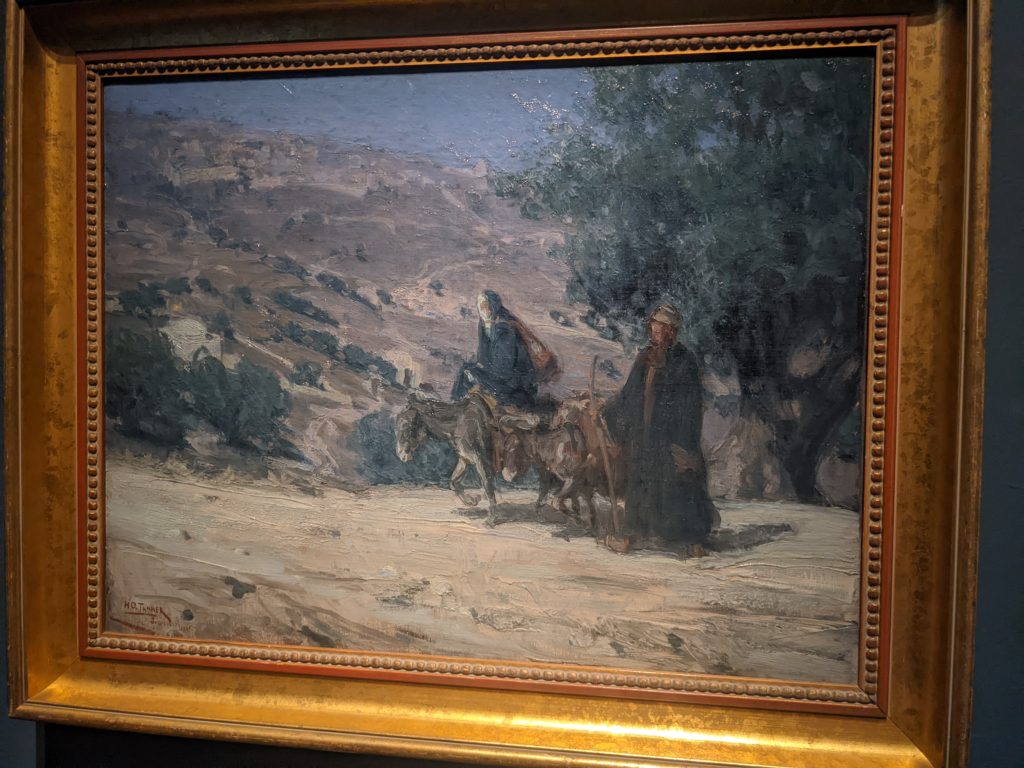
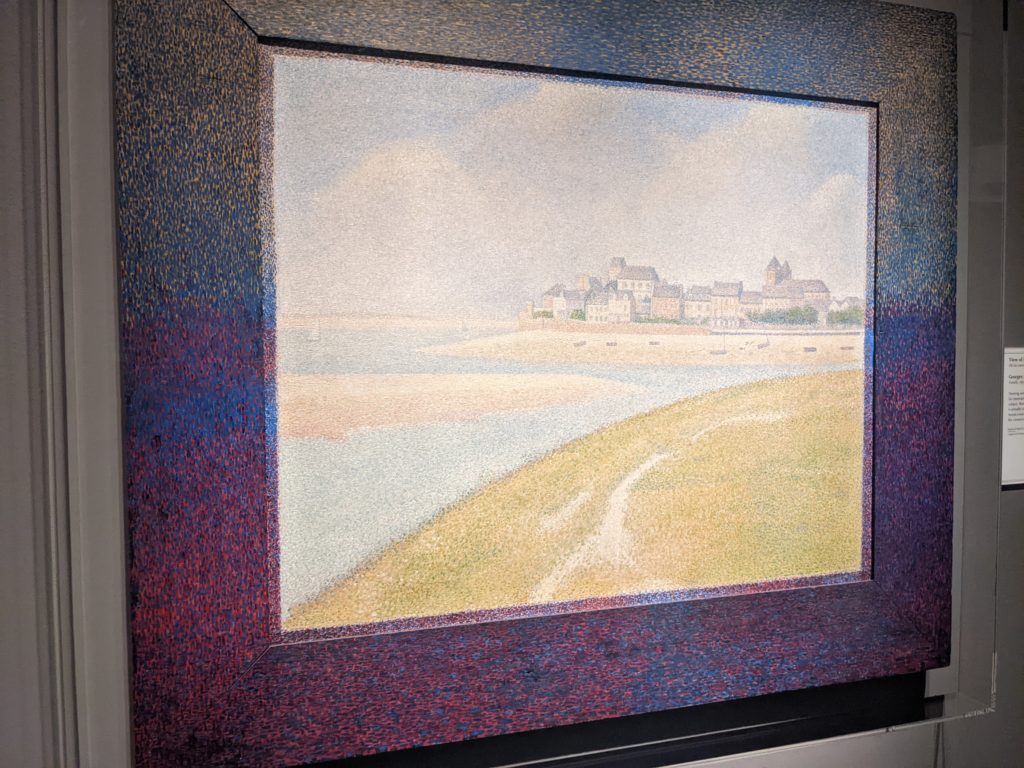
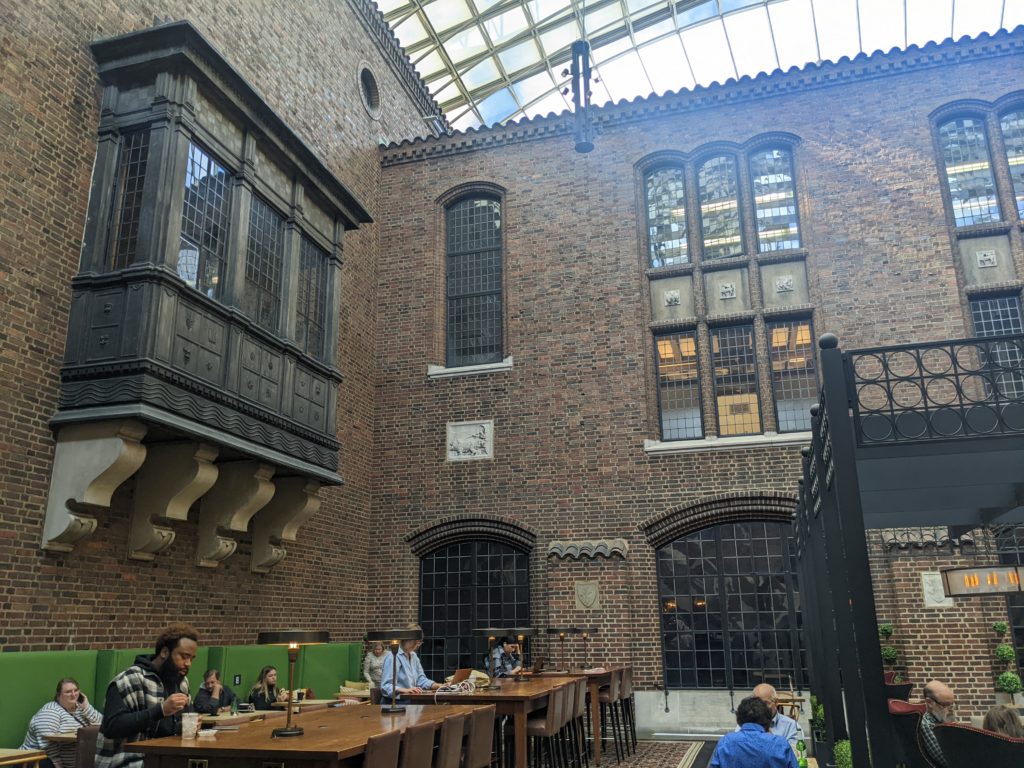
Thank you!
Overall, this conference was a wonderful opportunity and I am very grateful to all of the MRCG officers and volunteers who made it happen! Big thanks go to the Mellon Foundation for providing my travel funding. And I appreciate all the colleagues who helped me prepare and practice my talk in advance, as well as those who generously hosted me on my extended stay! This was the first in-person outreach I had done since April 2022, and my first presentation to other conservators since 2019, so it was great to practice these skills again.
Explore other articles like this
Art Spotlight: The Abandoned Hut by Mordecai Buluma
In this blog post Angie and Tashae discuss the symbolism behind The Abandoned Hut by Mordecai Buluma as well as the conservation treatment used to prepare it for exhibition.
Tricky Tape and Finicky Frames
In conservation, tape can be tricky! This post discusses the conservation treatment of the painting Recess Time at Farm by Akinola Lasekan.
Christ in the Manger: Virginia’s Most Endangered Artifact?
"Christ in the Manger" by Francis Musangogwantamu, along with nine other selected artifacts from other institutions in Virginia, will be featured in an online public voting competition, which will take place from February 20th to March 3rd, 2024. The artifact that receives the most votes will receive the People’s Choice award and a $1,000 grant to be put towards the object’s conservation treatment.

